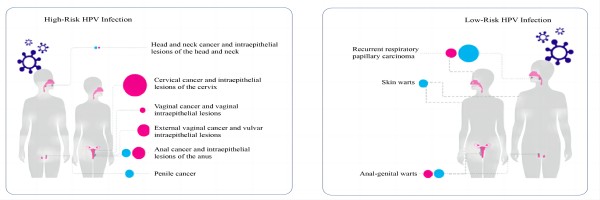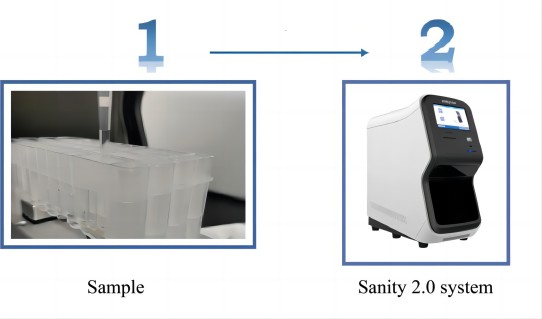March 4, 2023 is the sixth “HPV Awareness Day”, which was initiated by the International Papillomavirus Society (IPVS) to raise awareness of HPV prevention and control, call for public attention and understanding of the human papillomavirus (HPV) and its dangers, and eliminate HPV as soon as possible. The aim of the festival is to raise awareness and understanding of HPV and its risks, and to eliminate HPV-caused diseases such as cervical cancer.
What is the HPV virus?
Human papillomavirus (HPV), of which more than 200 types have been identified, can be classified into high-risk and low-risk types based on their cancer-causing potential. High-risk types include HPV-16, 18, 31, 33, 35, 39, 45, 51, 52, 56, 58, 59, 66 and 68. Persistent infection with high-risk HPV types can cause precancerous lesions and cancer in the cervix and vagina; low-risk types include HPV-6, 11, 26 and 40, which mainly cause skin warts, anal-genital warts and recurrent respiratory papillomas, among others.

What areas can be infected with HPV?
HPV is an envelope-free, double-stranded DNA virus that is highly epitheliophilic and selectively infects only skin and mucosal epithelial cells. Therefore, apart from the well-known cervix, the vagina, vulva, anus, penis, mouth, oropharynx, throat and skin are all vulnerable sites for HPV infection.

What are some of the symptoms that can occur with high-risk HPV infection?
Usually, most people who are infected with HPV high-risk types have no symptoms and exist in an asymptomatic carrier state as the transient infection is cleared by immunity. If the HPV infection persists, once the immune system has been weakened, the persistently infected HPV virus will reach the basal cellular layer and integrate with the host genes, which may cause further and bring about some typical features. For example, vaginal contact bleeding (vaginal bleeding after intercourse or easily after a gynecological examination, vaginal bleeding during non-menstrual periods, etc.). It is important to be aware of whether you have been screened for two cancers (preventive screening for cervical cancer, cytological or virological HPV testing) and to seek prompt medical attention in case of contact vaginal bleeding.
How to detect HPV infection quickly?
The HPV DNA virus test is the easiest, quickest and most effective method. Testing can determine if you are infected with HPV and the type of infection. The main purpose of the HPV test is to detect the presence of the HPV virus in people who are initially screened for cervical cancer, by collecting cells from the epithelium of the cervix and testing for HPV DNA. The doctor will make the next step in determining whether treatment is needed based on the patient’s HPV typing status.
Zeesan HPV Genotyping Assay – Accurate and Reliable Genotyping of 14 Types in One Tube
01 Covering all 14 high-risk HPV types explicitly identified by the WHO and fully typed.
02 Pre-dispensed dry reagents, sample loading in 1 step, 96 samples/4 samples in 2.5 hours; can be transported at room temperature and stored refrigerated.
03 Automated testing process, automatic result interpretation, easy to operate, effectively reducing laboratory workload and facilitating screening at the grassroots level.
04 Real-time closed-tube testing to avoid contamination and false positives and to ensure the accuracy of results.
ZEESAN Biotech MeltPro® HPV Genotyping Assay
ZEESAN Biotech MeltPro® HPV Genotyping Assay that provides a total solution for mass population screening and improves detection efficiency.

ZEESAN Biotech Integrated HPV detection system
ZEESAN Biotech Integrated HPV detection system to empower primary health services and improve the accuracy of cervical cancer. screening at the grassroots level.

May 24,2023

